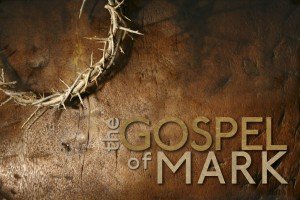 Any strictly chronological presentation of the books within the New Testament (NT) would, after any real consideration of Paul’s letter to the Romans, take us to Mark’s Gospel, the first and oldest of the written Gospels.
Any strictly chronological presentation of the books within the New Testament (NT) would, after any real consideration of Paul’s letter to the Romans, take us to Mark’s Gospel, the first and oldest of the written Gospels.
Around the year 70, an early Christian put the story of Jesus into written form for the first time. Though the location is uncertain, the best guess is a Christ-community near the northern border of Galilee in the Jewish homeland. We call the document Mark though it is not certain that somebody named Mark wrote it. The gospel does not name the author; he did not write The Gospel According to mark at the top of the first page. So also the authors of Matthew, Luke and John do not name themselves. Names were assigned only in the second century when the existence of several gospels required a way of distinguishing among them. Perhaps somebody named Mark wrote the earliest gospel, and perhaps not. It really doesn’t matter; its value doesn’t depend upon who wrote it. But we will call him and his gospel Mark.
Mark is the first narrative Gospel. Even if, as seems likely, a major part of Jesus’ teachings was committed to writing in the 50s or early 60s in the hypothetical document “Q”, that is a collection of teaching and sayings of Jesus, not a narrative.
Mark is also the shortest gospel. It has sixteen chapters, compared to Matthew’s twenty-eight, Luke’s twenty-four, and John’s twenty-one. In percentages based on the number of words in each, Mark is about 60 percent as long as Matthew, 57 percent as long as Luke, and 72 percent as long as John.
Mark’s importance is greater than its relative brevity might suggest. It is the fountainhead of the other two synoptic gospels, Matthew and Luke. Both authors not only had a copy of Mark when they wrote, but also used Mark’s threefold narrative pattern:
PART ONE
Galilee, where most of Jesus’ public activity happens
PART TWO
Journey from Galilee to Jerusalem for Passover
PART THREE
Jerusalem and Jesus’ final week, including confrontation with authorities, execution, and the discovery of the empty tomb
In Mark, and in Matthew and Luke, all of this fits into one year, though the authors do not say so explicitly. But only one Passover and one journey to Jerusalem are mentioned. Only in John’s gospel does Jesus go to Jerusalem several times, including more than one Passover. His time frame for Jesus’ public activity is thus three or four years
